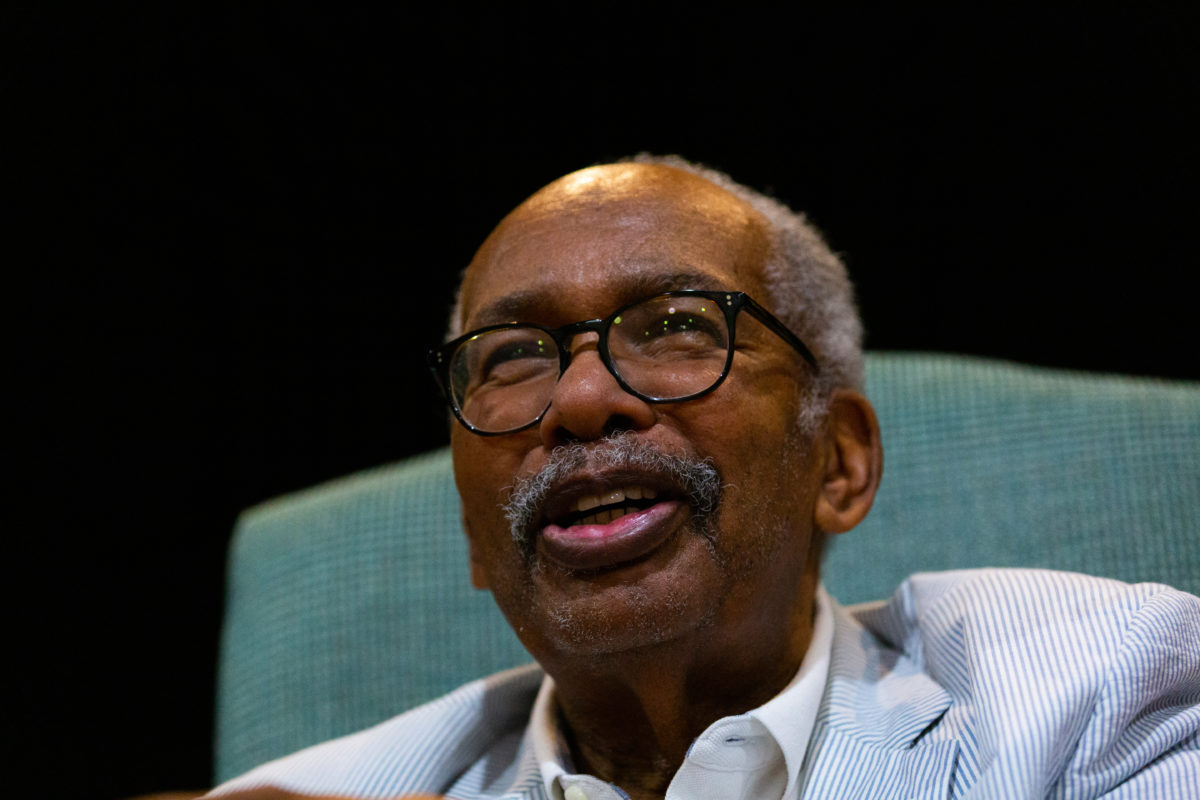For around three quarters of a century between the 1870’s and the early 1960’s, Jim Crow laws would turn the United States into a divided nation separated by race. As a result, African Americans would be forced to use “separate but equal services” which were oftentimes worse than those used by the white populace. However, resistance against Jim Crow was mounting, with the Supreme Court unanimously voting in favour of school desegregation through the Brown v. Board of Education case. As a result, many African American students around the country prepared to enrol in white schools, including Ernest Green in 1957, only to be confronted with immense resistance. The National History Academy (NHA) was pleased to have Green speak to the students of the Summer Residential Programme on July 26th as context for the programme’s MLK Case Study. His talk about Little Rock Central High School during his time of attendance was stellar, although there was clearly even more to his story. Therefore, after the camera flashes had died down, I sat down with Green to speak more about his personal history. What he told me would be an emotional albeit sobering recount of his experiences at Little Rock.
The stories of Ernest Green and the remaining members of the Little Rock Nine have become ingrained into the minds of most Americans, given that the Nine’s attendance at Little Rock Central High School forms part of the History curriculum in most states. Oftentimes the violence directed towards them is portrayed to only be happening outside the campus, so after the school doors closed behind their police escorts many forget the cold hard reality of life in a segregated school system. I therefore asked Green what the environment in the school itself was like. Immediately from the onset, the mood would be described by Green as “hostile” with students handing out cards and pamphlets decrying the school’s acceptance of the Nine. Harassment was constant outside the classroom, with students often physically challenging the Nine. This would grow to include an incident with Minnijean Brown, another one of the Nine who responded to what was being directed towards her, only to be confronted with expulsion from the school. Fortunately Green explained that “she was able to continue her education in New York”. Interestingly enough, in the classroom, a large proportion of animosity faded away, which according to Green wasn’t due to any change of heart but due to “how hard the courses were for everybody”. In fact, the hardness of the courses offered was one of the main reasons Green moved to Little Rock Central High School, notably because “more science and technology courses were offered”. These aforementioned courses would prove to be extremely helpful as it would give him the foundations required to pursue Business and Finance courses at Michigan University. His University diplomas would in themselves then set him up for his role as Assistant Secretary of Labour under the Carter Administration, showing how his ambition in pursuing a good high school foundation allowed him to reach “far further than he ever would imagine”. Green himself explained the importance of this as he views education as a means of further knitting people closer together. In fact he stated that education institutions should strive to be as diverse as possible because “multiethnic schools are not a liability, but an asset”.
Whilst the students, in many ways, faced off against discimination on their own, it is also important to remember that the students also had the assistance of armed guards. When I asked Green if the presence of guards gave reassurance, he gave a resounding “yes”. Interestingly enough, Incumbent President Dwight D. Eisenhower had chosen the paratrooping regiment who had freed the first Nazi concentration camps as the student’s escorts. As Eisenhower’s Attorney General, William Rogers would later recall, he felt the decision was necessary due to “concern for 9 teenagers’ safety from a group of people who could sympathise based on what they had previously seen”. Of course, the African American community also had a significant role in convincing President Eisonhower to keep the students safe. Green recounts that this includes a woman by the name of Daisy Bates who rallied in front of the confrontational crowd outside to show solidarity. Bates also convinced Louis Armstrong to delay his goodwill trip to the USSR so that he could watch Green go to school. Bates’s legacy is still visible today, with the road in front of the school being named Daisy Bates Boulevard. The decision to use the specific group of parachutists also was a political tactic on Eisenhower’s behalf, which sent a subtle albeit powerful message to the Southern politicians such as Woodrow Wilson Mann, Little Rock’s mayor. President Eisenhower’s boldness to assert federal power over local state pressures would mean that the protests against the Nine’s attendance eventually diminished. Even today, the story of the President’s involvement in the safety of the Nine is still a golden standard in the history of the United States. In fact, Green made it clear that the later attempts by President John F. Kennedy to enrol African American student James Meredith at Ole Miss were less successful as Kennedy had tried to make “both sides look as good as possible”. That was a decision that would fate September 30th 1962 as Ole Miss’s bloodiest day. As Meredith was being enrolled, the crowd opened fire which resulted in the deaths of two people. Green used Meredith’s enrollment as an example of how ineffective Federal power could be detrimental, which ties into the Summer Residential Programme’s earliest case study on The Federal Negative which explored the moral and practical implications of increased control from DC. Regardless of where people stand on Federal Power, what is absolutely true is that Ernest Green showed both courage and resolve, and will forever be ingrained in the story of America’s struggle for Civil Rights.
